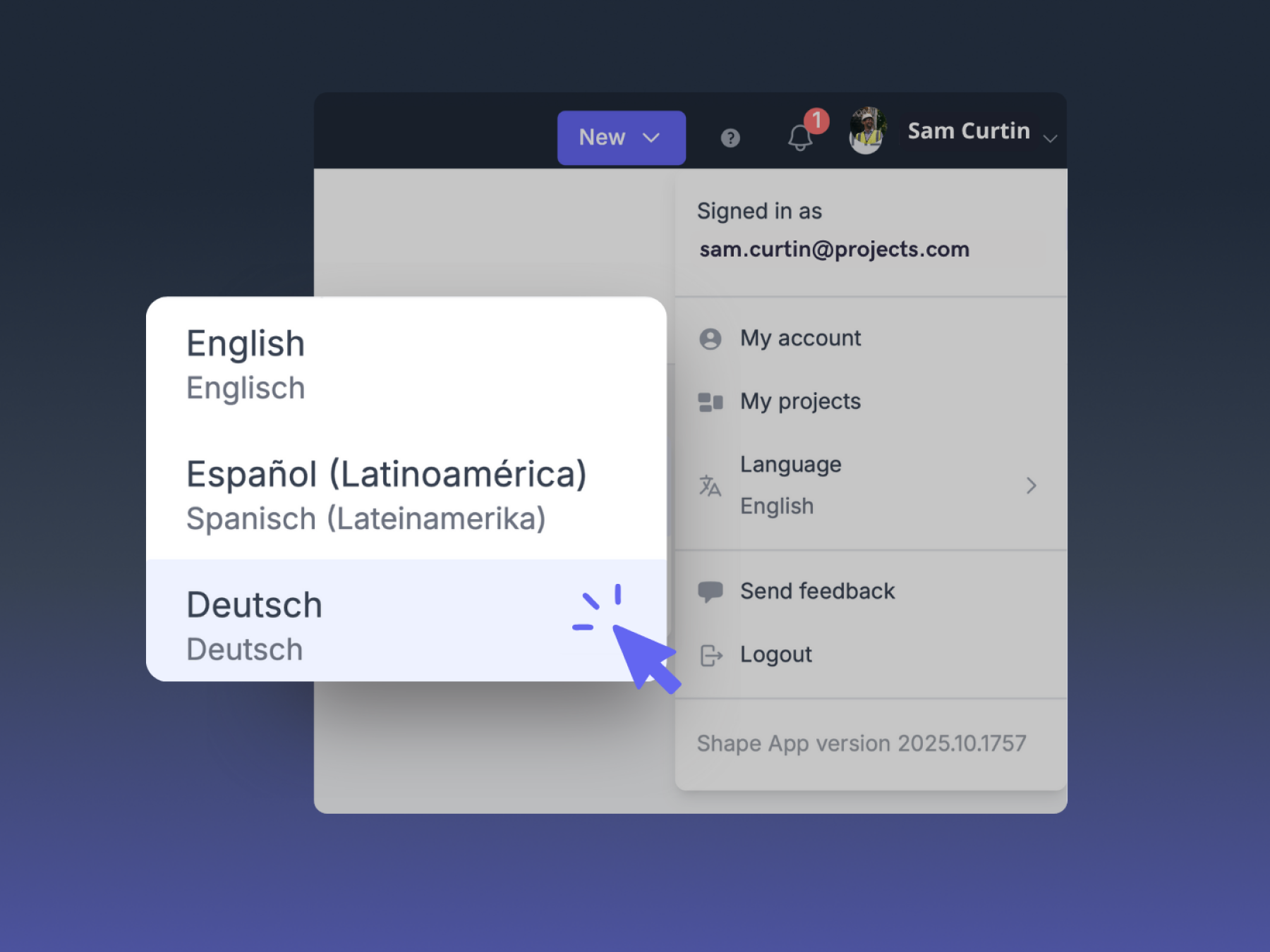On most large construction projects, the master programme is only as strong as the weakest weekly plan.
Yet across the industry, studies consistently show that less than 54% of tasks promised in weekly work plans are delivered on time. That means half of what's written down on Monday quietly slips into the following weeks.
The result is predictable: disrupted sequences, idle trades, wasted labour, and endless disputes about who is to blame.
Improving weekly work plan adherence in construction is one of the most direct levers available to project leaders. The measure often used - Percent Plan Complete (PPC) - provides a blunt but accurate reflection of how reliable the short-term schedule is.
When PPC is low, productivity suffers and confidence evaporates. When PPC rises above 80%, projects stabilise, disputes diminish, and margins improve.
This article explores why adherence matters so much, why it so often collapses, and what top contractors are doing differently. It sets out a weekly rhythm that works: preparing tasks properly, committing only to what is achievable, logging progress consistently, and closing out each week with evidence and learning.
The principles are universal, but they resonate particularly on mega projects where coordination is complex and risk exposure is high.
Why Weekly Work Plans Drive Project Predictability
Many see weekly plans as routine paperwork, but they are the engine room of delivery.
The master programme may look years ahead, but the weekly work plan determines what actually happens on site.
If it’s weak, the entire programme will falter.
Major builds rely on interdependent trades. When one misses a task, others stall:
- A delayed slab pour halts reinforcement.
- Missed containment work pauses ceilings.
- A single slip can ripple across multiple weeks.
Conversely, a strong weekly plan acts like a flywheel. Reliable weekly delivery builds confidence internally and with clients who see milestones achieved without drama.
Why Adherence Fails
The reasons weekly adherence collapses are familiar to anyone who has managed large projects.
Over-commitment
Weekly plans often read more like wish lists than firm promises.
Driven by pressure from above, or optimism bias from within, teams load the plan with more activities than resources can realistically deliver. Failure then becomes normalised, with 40-50% PPC seen as "just the way it is."
Uncleared Constraints
Tasks are committed even though drawings are incomplete, permits are outstanding, or materials are not confirmed. The plan may look full on paper, but in reality half the activities are not executable.
These tasks inevitably stall, and PPC collapses.
Poor Progress Tracking
On many projects, there is no consistent method for logging daily progress. Supervisors update their own spreadsheets, WhatsApp groups carry fragments of information, and site diaries remain incomplete.
As a result, managers often only discover at the end of the week that half the plan was missed.
No Structured Review
Too often, last week's plan is quietly forgotten while attention shifts to the next. Variances are not explained, lessons are not captured, and the same problems repeat week after week.
Without a "lookback" discipline, the feedback loop is broken.
%201.png)
Building a Weekly Rhythm that Works
The projects that consistently achieve high PPC are not those with more resources or longer hours. They are the projects that build a disciplined weekly rhythm and stick to it.
This rhythm has five stages.
1. Preparing Activities Properly
Only include tasks that are ready. A weekly plan should never be a dumping ground for half-ready activities.
This means confirming that:
- Drawings are issued
- RAMS are approved
- Permits are secured
- Materials are on site or booked
- Labour is confirmed
- Access is clear
Anything missing stays in the lookahead.
A lean, achievable plan beats a bloated, broken one.
This readiness filter may feel restrictive at first, but it transforms reliability. By ensuring that only "ready" tasks enter the plan, leaders can dramatically reduce mid-week blockages.
Shape’s Weekly Work Planner automates this step with built-in readiness checks, flagging missing permits, incomplete drawings, or unavailable materials before tasks are added to the plan. That means teams only commit to executable activities. Not optimistic guesses.
The result is a lean, achievable plan that drives reliable PPC instead of a bloated one full of tasks destined to stall.
2. Collaborative Commitment
Make planning meetings more than updates. Each trade should commit to specific, measurable tasks:
Instead of:
“Continue MEP,” say “install 30m of 160mm duct in Zone B.”
Assign each task to a named individual, not just a company. Accountability should live with people. If it can’t be confidently delivered, it shouldn’t go on the plan.
This shift from top-down scheduling to bottom-up commitments is at the heart of reliable weekly planning.
3. Daily Progress Logging
Once the week begins, adherence depends on feedback. Without daily updates, managers are blind.
Progress should be logged consistently for every task: whether it is started, in progress, or complete, and what percentage has been achieved against the week's expectation. Photos and notes add context, making it clear whether the task is genuinely finished or only partially done.
Shape’s Shift Manager simplifies this by making daily reporting fast, structured, and mobile-friendly, so supervisors can update progress in minutes and managers can spot risks midweek, not on Friday.
This live progress data allows leaders to see problems as soon as they happen and intervene. If a pour slips on Tuesday, the following day's tasks can be resequenced, rather than waiting until Friday to discover the miss.
Daily logging turns weekly plans from static documents into living tools.
4. End-of-Week Lookback
The fourth stage is the weekly review. At the end of each week, the plan must be examined against reality.
Every week should end with a structured review:
- Calculate Percent Plan Complete (PPC).
- Record reasons for missed tasks (late drawings, plant failure, over-commitment, etc.).
This process is not about blame. It is about learning.
Shape’s Weekly Work Planner automatically calculates PPC and captures variance reasons, revealing patterns so teams can act on root causes, not symptoms.
By capturing the reasons for variance, patterns emerge. If late information is consistently the cause, the design management process must be addressed. If over-commitment is the problem, planning discipline needs strengthening.
The lookback is where a project learns to improve its reliability.
5. Closing Out
Each week must close formally.
Lock progress data, archive the plan, and prevent unreviewed carryovers.
This ensures that records are complete and that no unfinished activities are carried forward without scrutiny.
In Shape’s Control Room, those records can be automatically stored, creating a defensible evidence trail for payments, claims, and client reports.
.png)
The Role of Leadership
The mechanics of weekly planning are straightforward. The challenge lies in building the culture around them.
Leaders must send clear signals that weekly planning is not optional paperwork but the foundation of delivery. They must protect the routine - ensuring that planning meetings happen at the same time each week, that daily logging is done, and that lookbacks are completed without fail.
Just as important is setting the right tone. The lookback in particular must be a no-blame space.
If variance explanations are used to punish individuals, honesty will vanish and learning will stop. Use PPC not to punish, but to measure reliability. Shape’s portfolio dashboards allow leaders to see which teams consistently hit targets and where additional coaching is needed.
The Payoff
When this rhythm is embedded:
- PPC climbs from 40–50% to 70–80%+
- Crews arrive to find work truly ready
- Managers can react midweek, not post-mortem
- Clients see steady progress and fewer surprises
Commercially, complete weekly records translate into claims-ready evidence for payments and dispute defence. Shape’s integrated system links every task, photo, and log into a single source of truth - proof of what was planned, what was done, and why.
Conclusion
Improving weekly work plan adherence on construction projects is not about heroic effort. It is about building a disciplined routine: prepare only ready tasks, make collaborative commitments, log progress daily, review honestly at week's end, and close out properly.
Projects that adopt this rhythm achieve higher PPC, deliver predictably, and stronger margins. They also build trust - within the team and with the client - because promises are realistic and consistently met.
👉 Ready to see how leading contractors are putting this discipline into practice with live plans, variance tracking, and evidence-based lookbacks? Speak to an Advisor today.
Frequently Asked Questions
PPC measures how many tasks in a weekly work plan were completed as promised. If 80 out of 100 planned tasks are delivered, PPC is 80%. High PPC means a reliable programme, fewer disputes, and smoother delivery. Shape’s Weekly Work Planner calculates PPC automatically, linking planned tasks to daily progress logs, so leaders always know the true reliability of their weekly plans.
Traditional methods force supervisors to update spreadsheets or WhatsApp groups after hours. Shape’s Shift Manager replaces this with a mobile-first daily log that captures progress, photos, labour, and materials in minutes. Records are instantly structured and shared, so managers don’t need to chase updates or retype data later.
The key is only committing to “ready” activities. Shape’s Weekly Work Planner makes this easier by tracking constraints like permits, drawings, or material delivery, and flagging them before tasks are added. This ensures plans are realistic, not wish lists.
Without structured lookbacks, the same mistakes repeat. Shape Construction enables end-of-week reviews where PPC is calculated automatically, variance reasons are logged, and reports are generated with a single click. This evidence supports claims, extensions of time, and client reporting, while also driving continuous improvement.
Most weekly planning tools stop at task management. Shape goes further by linking daily and weekly records with commercial data. Through the Change Tracker, commercial managers can see change signals - issues, downtime, delayed tasks - as they happen, complete with evidence for claims and entitlement.
Many platforms act like digital forms, capturing fragments of information without context. Shape Construction is built as a field-first, integrated system: Shift Manager for daily diaries, Weekly Work Planner for planning, Issue Tracker for blockers, and Channels for communication - all feeding into one source of truth. Importantly, Shape Construction is not a replacement for Procore or Autodesk. It’s a complementary, site-level delivery layer designed to work alongside them. Shape’s structured production data can be exported or integrated back into the enterprise stack wherever required, strengthening the wider digital ecosystem rather than competing with it.This connected approach is what makes full performance management possible — practical for site teams and powerful for leadership visibility.








.png)



